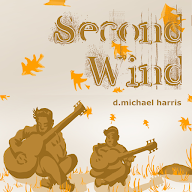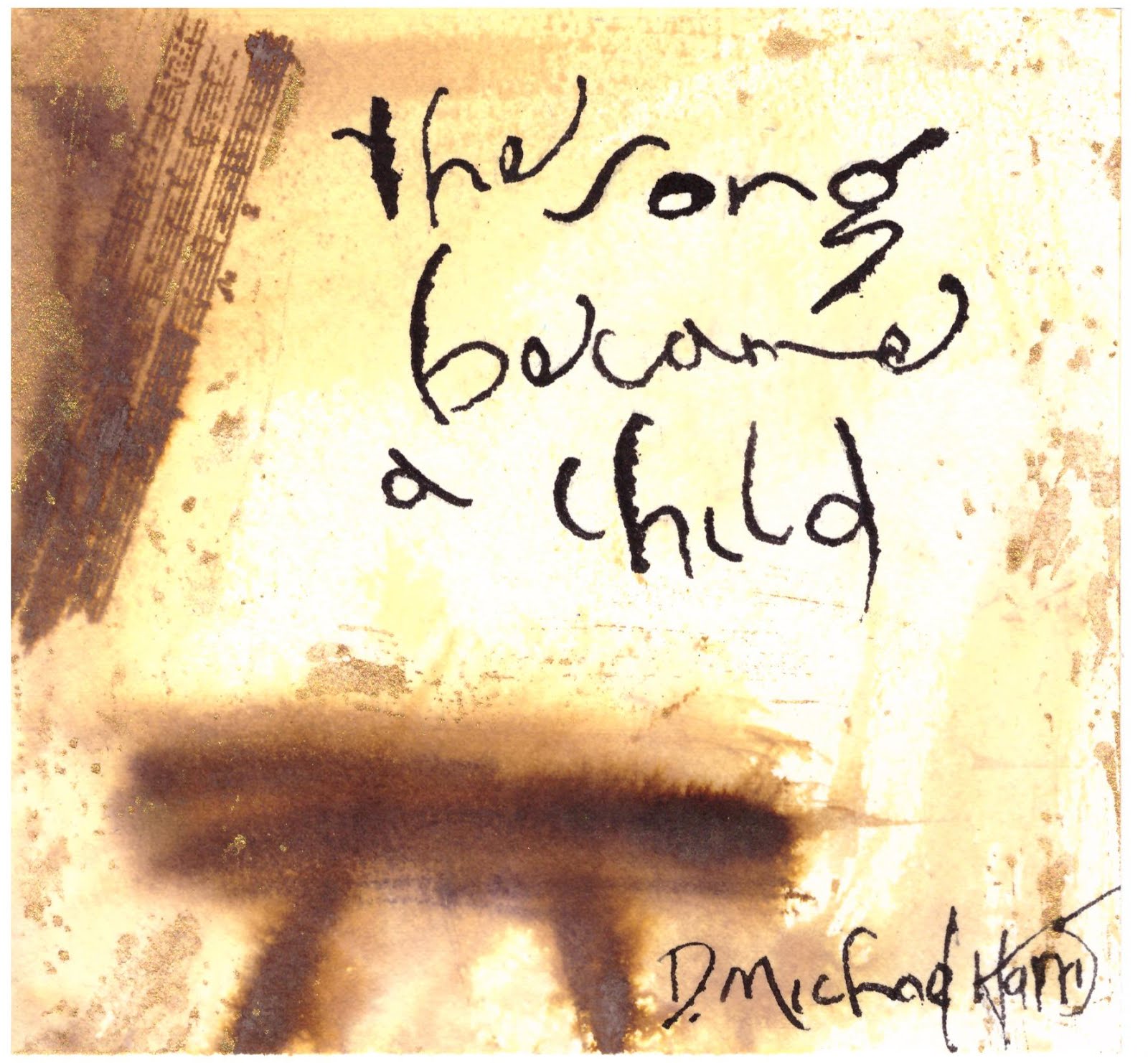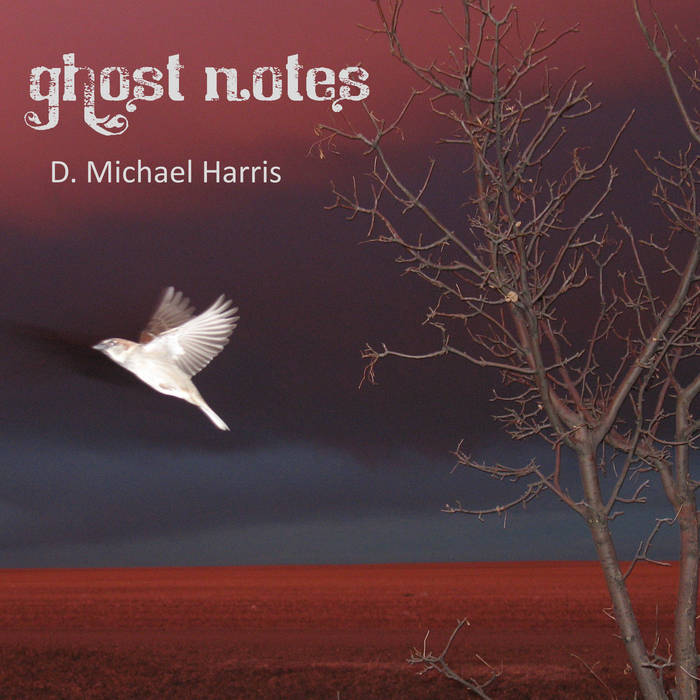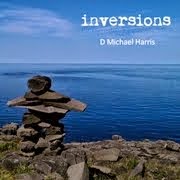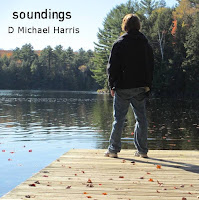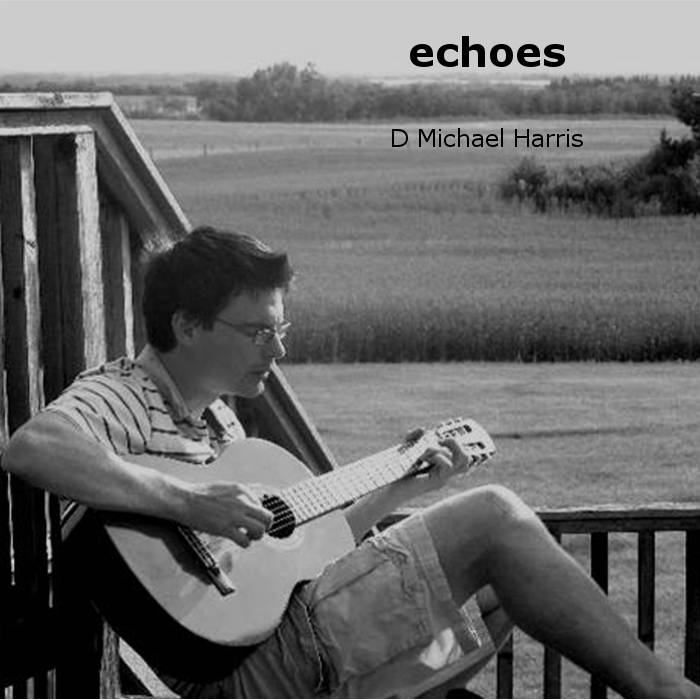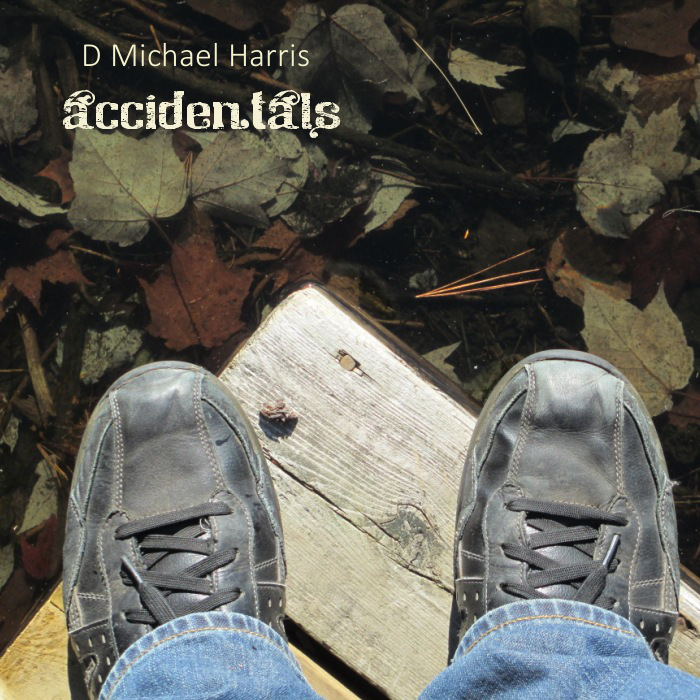A few years ago I was speaking with a colleague in ministry about how the church responds to trans people. I tried to suggest that, strictly speaking, as a question of chapter-and-verse citation, the Bible does not say anything about the morality of gender transitioning, and, therefore, it is probably best for the church not to frame it as a moral issue.
My friend cocked an eyebrow. “Really?” he said. “You don’t think the Bible addresses this?” And then he cited Deuteronomy 22:5—“A woman must not wear men’s clothing, nor a man wear women’s clothing, for the Lord your God detests anyone who does this”—and he rested his case.
At the time, I hadn’t spent a great deal of time digging into Deuteronomy 22:5, so I didn’t argue the point. I was pretty sure, however, that a single verse in Torah hardly made an airtight argument. I felt this especially because Christians believe as a foundation of their faith that the Lord Jesus has fulfilled all of Torah in his death and resurrection, and the single command to love our neighbours faithfully in Jesus Christ fulfills the entirety of Torah (Galatians 5:14).
A while later, though, I had occasion to look more closely at the Hebrew text of Deuteronomy 22:5, and I noticed something I had never considered before.
You see: the most common word for “clothing” in the Hebrew Bible is beged. It comes from the Hebrew root word bâgad, “to cover,” and occurs 217 times in the Hebrew Bible. Other common words for clothing include lebûsh (32 occurrences), malbûsh (8 occurrences), śimlâh (29 occurrences) and mekasseh (4 occurrences).
In contrast to this, the word “kelı̂y” (319 occurrences) is a somewhat flexible word, which generally means something like “equipment” or “furnishings.” It can refer to a vessel or sack that contains something, to jewelry, to a tool or weapon, to gear that someone might wear for a specific purpose, or to a soldier’s armour. The meaning of kelı̂y is very much dependent on the context in which it is being used.
The most common word for “a man,” in Hebrew is the noun 'ı̂ysh. It occurs 2163 times and means “a man” in the most general sense. The second most common word for “a man,” is the word 'âdâm, with 541 occurrences. This is the word that the name “Adam” comes from and can mean a “man” specifically, or a human being more generally (regardless of gender, as in “God created 'man' in his image”). The Hebrew word for “male,” with special reference to the sexed-body, is zâkâr (with 82 occurrences).
In contrast to these various terms for a “man,” the word geber literally means something like “valiant man,” or, more loosely, a “warrior.” It occurs 65 times in the Hebrew Bible.
With that rough and ready Hebrew glossary in mind, let me return to Deuteronomy 22:5, and its prohibition, seemingly, against men and women wearing each other’s clothing. Because the word it uses for “man” is not 'ı̂ysh, or 'âdâm, or zâkâr. And neither is the word for the man’s clothing beged, lebûsh, or śimlâh. The word the NIV translates as “man” is geber, “a mighty man,” and the word the NIV translates as “clothing” is kelı̂y, “gear/equipment.” Admittedly, the word geber can be used in the Hebrew Bible to describe a man generally, in a way similar to how the word 'ı̂ysh is used, but in this context, paired with the word kelı̂y like this, it seems obvious to me that simple, generic “cross dressing” is not what the verse has in mind.
Literally, we might render it like this: “There shall not be ‘the gear’ of a ‘valiant man’ upon a woman, and a ‘valiant man’ shall not put on the mantle (simlat) of a woman.”
A rough and ready gloss of the verse might run like this: “A woman shall not put on the equipment of a warrior, and a warrior shall not put on a woman’s dress.”
It would take more unpacking than I have space for in a simple blog post like this to determine how accurate this gloss is to the original intent. It’s notable to me, however, that the prohibition against a woman “wearing a warrior’s arms” appears in Chapter 22, shortly after a lengthy list of laws pertaining to how the Israelites are to wage war (or not to wage war, as the case may be) with the nations they will encounter in the Promised Land. Verses 21:10-14, for instance, give careful guidelines for how the Israelites are to treat a woman taken captive in war.
With this context in mind, I can’t help but wonder if Deuteronomy 22:5 actually has nothing to do with the act of cross-dressing, but instead is prohibiting the people of Israel from using their women as soldiers in battle, or allowing their male soldiers to shirk their “manly” duty to fight on behalf of their people (both of which, in an Ancient Near Eastern context, would be an affront to the nation's honor (see, for instance, Judges 4:9)).
Even if these arguments aren’t conclusive, they strongly suggest that we cannot read Deuteronomy 22:5 as some sort of a definitive word on the modern day phenomenon of gender dysphoria, or use it as a some kind of directive on how we ought to respond to trans people. If we do, we'll be doing a kind of violence to the text (to say nothing of what it does to trans people themselves), wrenching the verse from its context and making it say something it’s not meaning to say.
A Fresh Look at Cross-Dressing in Deuteronomy
A Fresh Look at the Prophet Daniel
Last week I shared some thoughts about an often-overlooked detail in the story of the Road to Emmaus, and the possibility that, counter to generations of tradition, the two disciples that Jesus encountered that day might not both have been male, that they might have been a married couple. That post received an unexpected level of engagement at my church, so much so that I thought I’d share another “overlooked detail” that I came across in my daily Bible reading, that maybe sheds some interesting light on an familiar story.
The story in question involves the prophet Daniel, one of the best loved prophets in the Old Testament. Many of us have probably heard the stories of Daniel interpreting King Nebuchadnezzar’s dreams, or reading the writing on the wall, or braving the lion’s den, but the other day I was reading Daniel Chapter 1 and I saw something I never noticed before.
In verse 1:3, we are told that Daniel was brought to Babylon from Jerusalem during the exile, and that upon arriving in the palace he was placed in the custody of Ashpenaz, the chief of Nebuchadnezzar’s court officials. That is how the NIV renders the verse, anyways. The NASB reads the same, though it includes a footnote clarifying that the word could be translated as the “chief of the king’s eunuchs.” This is, incidentally, how the old King James version translates it.
Was Ashpenaz actually the chief of Nebuchadnezzar’s palace eunuchs? If so, what would that have meant for Daniel, to have been placed in Ashpenaz’s custody?
The word in question is sârı̂ys, a Hebrew word that comes from a root word that literally means “to castrate.” It’s the word used in Esther 2:14 to describe Shaashgaz, for example, who was the eunuch in charge of the King’s harem, and certainly in the context of that story—which shares many similarities with Daniel, by the way—in that story it is highly probable that Shaashgaz, as the keeper of the king’s harem, was a eunuch in the literal sense of the word.
The word sârı̂ys can also simply mean an “official” or “officer of the court,” however, with no implications as to the person’s reproductive status. In the story of Joseph and Potiphar, for example, we’re told that Potiphar was a sârı̂ys of Pharaoh, and later we discover that he is married, and may even have had a daughter (Gen 41:45). In that story, it’s not likely that Potiphar was a eunuch in the technical sense, which is why most English translations call him an “official” in Pharoah’s court.
In some cases, as in the story of Esther above, the context itself can help us decide how the word is being used. We know, for example, that in 2 Kings 20:18, when the Jewish King Hezekiah sins by showing off his wealth and military might to the envoys from Babylon, the prophet Isaiah warns him that, as a result, his children will be taken away and made to be sârı̂yim in the palace of the Babylonian king. Given the severity of this threat, the context suggests that Babylon will “make eunuchs” of Hezekiah’s sons in the literal sense, not simply make them into court officials. It is possible that this was a common practice—or at least, not uncommon—for Babylon to castrate its prisoners of war before making them servants of the court.
So what about Daniel? Does the term sârı̂ys in this story mean more than just “an official?” Was Daniel literally “made into a eunuch” when he came to serve under Ashpenaz, the head of the king's eunuchs?
Admittedly, the final answer is inconclusive (hence the NASB’s footnote leaving both possibilities), but my hunch, for what it’s worth, is that he was.
I say this partly because of the similarities between the story of Daniel and the story of Esther, another Jewish captive who experienced sexual violence at the hands of the Persian court (though admittedly Esther’s sexual violence was of a different nature). I also say it because of the way 2 Kings 20:18 seems to foreshadow Daniel’s situation so directly.
It would be easy to make a much bigger deal out this detail than the context warrants; Daniel being “made a eunuch” does not make his situation the same as people who identify as what now adays we might call a “sexual minority.” At least, not exactly the same. If Daniel was a eunuch, it was not sex-change surgery he received. He was violently mutilated by an oppressive empire. It would be anachronistic, I think, to over-lay his story onto the experience of people today who identify as trans, or experience gender dysphoria.
At the same time, it would be easy to make too small a deal out of this detail, too; and that, I think, is the greater danger. In Deuteronomy 23:1, we’re told quite explicitly that no one who has been castrated is to be permitted in the assembly of God’s people. It’s not clear what should be done with them, but it’s clear they are to be “excluded from the assembly.” And yet, if my reading of Daniel’s story is accurate, then in Daniel we have at least one instance of someone who falls under the Deuteronomy 23 prohibition, but instead of being excluded he is, rather, used powerfully by God.
There’s a line in Daniel 10:11 that I’ve always found to be very poignant. Daniel has received a horrific vision of the future and is in deep distress. He’s been praying and mourning for three days straight, when a divine visitor finally comes to comfort him with the interpretation of what he’s seen. Before this theophanic messenger does that, however, he starts by saying: “You, Daniel, are ‘highly esteemed.’”
That’s how the NIV renders it, at least, but I don’t think it’s strong enough. In Hebrew the word is châmad, a word that literally means “desirable,” or “precious.” It’s the word used to describe precious jewels in 2 Chronicles 20:25, precious gold in Ezra 8:27. In Psalm 19:9-10 it’s the word used to describe “the judgements of the Lord”—they are more desirable (châmad) than precious gold.
The use of this word to describe Daniel in 10:11 would hit you in the gut with its beauty, if, in Daniel 1:3, it really was the case that he had been castrated when he was brought into the service of King Nebuchadnezzar. Because if he was, then according to the Law of Moses, his status as someone whose body lacked “full sexual congruity with his gender,” so to speak, would mean that he should have been excluded from the community, cut off from life with God (no pun intended).
And yet, Daniel discovers just exactly the opposite: his divine messenger assures him that he is deeply loved—desirable even, and precious—regardless any sexual violence he may have experienced at the hands of the oppressor, and whether or not his body was “sexually whole” (for lack of a better way of saying it). Those things would not determine his worth in God’s eyes, or, more importantly, his desirability as a servant of the Lord.
Neither do they determine our worth in God’s eyes, if we are in circumstances similar to Daniel’s: if we have experienced sexual violence, perhaps, that has left a permanent scar on us, if our bodies do not align wholly with our sense of who we are, if there is something about our bodies that feels to us “un-whole,” and we think, as a result, there’s no place for us in community. If I’m on to anything in my reading of Daniel’s story, none of those things make us any less precious to God, or God less able to use us powerfully for his purposes.
The story in question involves the prophet Daniel, one of the best loved prophets in the Old Testament. Many of us have probably heard the stories of Daniel interpreting King Nebuchadnezzar’s dreams, or reading the writing on the wall, or braving the lion’s den, but the other day I was reading Daniel Chapter 1 and I saw something I never noticed before.
In verse 1:3, we are told that Daniel was brought to Babylon from Jerusalem during the exile, and that upon arriving in the palace he was placed in the custody of Ashpenaz, the chief of Nebuchadnezzar’s court officials. That is how the NIV renders the verse, anyways. The NASB reads the same, though it includes a footnote clarifying that the word could be translated as the “chief of the king’s eunuchs.” This is, incidentally, how the old King James version translates it.
Was Ashpenaz actually the chief of Nebuchadnezzar’s palace eunuchs? If so, what would that have meant for Daniel, to have been placed in Ashpenaz’s custody?
The word in question is sârı̂ys, a Hebrew word that comes from a root word that literally means “to castrate.” It’s the word used in Esther 2:14 to describe Shaashgaz, for example, who was the eunuch in charge of the King’s harem, and certainly in the context of that story—which shares many similarities with Daniel, by the way—in that story it is highly probable that Shaashgaz, as the keeper of the king’s harem, was a eunuch in the literal sense of the word.
The word sârı̂ys can also simply mean an “official” or “officer of the court,” however, with no implications as to the person’s reproductive status. In the story of Joseph and Potiphar, for example, we’re told that Potiphar was a sârı̂ys of Pharaoh, and later we discover that he is married, and may even have had a daughter (Gen 41:45). In that story, it’s not likely that Potiphar was a eunuch in the technical sense, which is why most English translations call him an “official” in Pharoah’s court.
In some cases, as in the story of Esther above, the context itself can help us decide how the word is being used. We know, for example, that in 2 Kings 20:18, when the Jewish King Hezekiah sins by showing off his wealth and military might to the envoys from Babylon, the prophet Isaiah warns him that, as a result, his children will be taken away and made to be sârı̂yim in the palace of the Babylonian king. Given the severity of this threat, the context suggests that Babylon will “make eunuchs” of Hezekiah’s sons in the literal sense, not simply make them into court officials. It is possible that this was a common practice—or at least, not uncommon—for Babylon to castrate its prisoners of war before making them servants of the court.
So what about Daniel? Does the term sârı̂ys in this story mean more than just “an official?” Was Daniel literally “made into a eunuch” when he came to serve under Ashpenaz, the head of the king's eunuchs?
Admittedly, the final answer is inconclusive (hence the NASB’s footnote leaving both possibilities), but my hunch, for what it’s worth, is that he was.
I say this partly because of the similarities between the story of Daniel and the story of Esther, another Jewish captive who experienced sexual violence at the hands of the Persian court (though admittedly Esther’s sexual violence was of a different nature). I also say it because of the way 2 Kings 20:18 seems to foreshadow Daniel’s situation so directly.
It would be easy to make a much bigger deal out this detail than the context warrants; Daniel being “made a eunuch” does not make his situation the same as people who identify as what now adays we might call a “sexual minority.” At least, not exactly the same. If Daniel was a eunuch, it was not sex-change surgery he received. He was violently mutilated by an oppressive empire. It would be anachronistic, I think, to over-lay his story onto the experience of people today who identify as trans, or experience gender dysphoria.
At the same time, it would be easy to make too small a deal out of this detail, too; and that, I think, is the greater danger. In Deuteronomy 23:1, we’re told quite explicitly that no one who has been castrated is to be permitted in the assembly of God’s people. It’s not clear what should be done with them, but it’s clear they are to be “excluded from the assembly.” And yet, if my reading of Daniel’s story is accurate, then in Daniel we have at least one instance of someone who falls under the Deuteronomy 23 prohibition, but instead of being excluded he is, rather, used powerfully by God.
There’s a line in Daniel 10:11 that I’ve always found to be very poignant. Daniel has received a horrific vision of the future and is in deep distress. He’s been praying and mourning for three days straight, when a divine visitor finally comes to comfort him with the interpretation of what he’s seen. Before this theophanic messenger does that, however, he starts by saying: “You, Daniel, are ‘highly esteemed.’”
That’s how the NIV renders it, at least, but I don’t think it’s strong enough. In Hebrew the word is châmad, a word that literally means “desirable,” or “precious.” It’s the word used to describe precious jewels in 2 Chronicles 20:25, precious gold in Ezra 8:27. In Psalm 19:9-10 it’s the word used to describe “the judgements of the Lord”—they are more desirable (châmad) than precious gold.
The use of this word to describe Daniel in 10:11 would hit you in the gut with its beauty, if, in Daniel 1:3, it really was the case that he had been castrated when he was brought into the service of King Nebuchadnezzar. Because if he was, then according to the Law of Moses, his status as someone whose body lacked “full sexual congruity with his gender,” so to speak, would mean that he should have been excluded from the community, cut off from life with God (no pun intended).
And yet, Daniel discovers just exactly the opposite: his divine messenger assures him that he is deeply loved—desirable even, and precious—regardless any sexual violence he may have experienced at the hands of the oppressor, and whether or not his body was “sexually whole” (for lack of a better way of saying it). Those things would not determine his worth in God’s eyes, or, more importantly, his desirability as a servant of the Lord.
Neither do they determine our worth in God’s eyes, if we are in circumstances similar to Daniel’s: if we have experienced sexual violence, perhaps, that has left a permanent scar on us, if our bodies do not align wholly with our sense of who we are, if there is something about our bodies that feels to us “un-whole,” and we think, as a result, there’s no place for us in community. If I’m on to anything in my reading of Daniel’s story, none of those things make us any less precious to God, or God less able to use us powerfully for his purposes.
A Fresh Look at the Road to Emmaus
In Luke 24:13-32, we’re told about a mysterious encounter two disciples had with the risen Jesus, in the afternoon on the day of his resurrection. It’s sometimes called “The Emmaus Road Encounter,” because these two disciples encounter him while they’re on their way to Emmaus, a small village about seven miles outside of Jerusalem. At first they don’t know it’s him, and the text strongly implies that somehow or other they are being supernaturally prevented from recognizing him. They start sharing with him the bewildering story they'd heard that morning, about an empty tomb and a risen Lord, and he explains to them how it had all been predicted in the Old Testament Scriptures. When they finally reach their destination, and he joins them for dinner, we’re told that they suddenly recognize him “in the breaking of the bread.” The instant it dawns on them who they’ve been talking to, however, he vanishes, leaving them with racing thoughts and burning hearts.
It’s a great story, one of the most famous post-resurrection encounters in the New Testament. One Easter I was researching it for a sermon, however, when, like the disciples recognizing Jesus in the breaking of the bread, I came across some details that helped me recognize someone in the story I'd never seen before.
 You see: every illustration of the road to Emmaus I’ve ever seen has always been roughly the same. Two men are seen, walking along an idyllic country road, with a mysterious stranger (usually in white) walking between them. I’ve sprinkled a few samples throughout this post to help you imagine it.
You see: every illustration of the road to Emmaus I’ve ever seen has always been roughly the same. Two men are seen, walking along an idyllic country road, with a mysterious stranger (usually in white) walking between them. I’ve sprinkled a few samples throughout this post to help you imagine it.
The details may vary somewhat from picture to picture, but, in addition to the presence of the mysterious stranger, there’s one detail they all share in common. The two disciples are always both depicted as being male. I’ve never seen a painting of the Emmaus Road Encounter that bucks this trend: a mysterious Jesus walking along the road with two men.
Now, this post is primarily an exegetical reflection, not an advocacy piece, but let me humbly point out that there is nothing in the text that would require both disciples to be male, and there are, actually, strong exegetical reasons to suspect that one of the two was, in fact, female.
Certainly, one of them is quite clearly male. We’re told he’s named Cleopas, and he seems to be doing most of the talking. The other disciple remains unnamed throughout the encounter, and, though he or she may have spoken at some point, the narrative uses a plural verb, “they said,” to describe it; that is to say, it only describes the second disciple speaking with Cleopas together, so we don't have any specific personal pronouns we can use to determine his or her gender.
All we know that he or she was traveling with someone named Cleopas, and they apparently lived together; at least, they’re staying at the same house when they arrive at Emmaus.
This details stands out pretty markedly when you go looking elsewhere in the New Testament for evidence of who this Cleopas might have been, and who might have been living with him in Emmaus.
In John 19:25, we’re told that when Jesus was crucified, a woman named Mary, was standing at his cross, along with Jesus’s mother, Jesus’s aunt, and Mary Magdalene. This fourth woman, we’re told, was “Mary the wife of Clopas.”
Could that Mary, the wife of a man named Clopas, be the same disciple in Luke 24:13, walking along the road with a man named Cleopas?
It’s a great story, one of the most famous post-resurrection encounters in the New Testament. One Easter I was researching it for a sermon, however, when, like the disciples recognizing Jesus in the breaking of the bread, I came across some details that helped me recognize someone in the story I'd never seen before.
 You see: every illustration of the road to Emmaus I’ve ever seen has always been roughly the same. Two men are seen, walking along an idyllic country road, with a mysterious stranger (usually in white) walking between them. I’ve sprinkled a few samples throughout this post to help you imagine it.
You see: every illustration of the road to Emmaus I’ve ever seen has always been roughly the same. Two men are seen, walking along an idyllic country road, with a mysterious stranger (usually in white) walking between them. I’ve sprinkled a few samples throughout this post to help you imagine it.
The details may vary somewhat from picture to picture, but, in addition to the presence of the mysterious stranger, there’s one detail they all share in common. The two disciples are always both depicted as being male. I’ve never seen a painting of the Emmaus Road Encounter that bucks this trend: a mysterious Jesus walking along the road with two men.
Now, this post is primarily an exegetical reflection, not an advocacy piece, but let me humbly point out that there is nothing in the text that would require both disciples to be male, and there are, actually, strong exegetical reasons to suspect that one of the two was, in fact, female.
Certainly, one of them is quite clearly male. We’re told he’s named Cleopas, and he seems to be doing most of the talking. The other disciple remains unnamed throughout the encounter, and, though he or she may have spoken at some point, the narrative uses a plural verb, “they said,” to describe it; that is to say, it only describes the second disciple speaking with Cleopas together, so we don't have any specific personal pronouns we can use to determine his or her gender.
All we know that he or she was traveling with someone named Cleopas, and they apparently lived together; at least, they’re staying at the same house when they arrive at Emmaus.
This details stands out pretty markedly when you go looking elsewhere in the New Testament for evidence of who this Cleopas might have been, and who might have been living with him in Emmaus.
In John 19:25, we’re told that when Jesus was crucified, a woman named Mary, was standing at his cross, along with Jesus’s mother, Jesus’s aunt, and Mary Magdalene. This fourth woman, we’re told, was “Mary the wife of Clopas.”
Could that Mary, the wife of a man named Clopas, be the same disciple in Luke 24:13, walking along the road with a man named Cleopas?
Before you answer, I should point out that: (a) both names are a variation on the Greek name Cleopater; (b) some ancient manuscripts spell the name in John 19:25 as Cleophas; and (c) at least some Christian traditions hold that they are the same person.
Of course, if the Cleopas that Jesus met on the road to Emmaus really was the same Clopas mentioned in John 19:25, whose wife was standing at the cross when the Lord died, then it doesn’t take much to connect the dots. It’s very likely, and certainly not impossible, that the second disciple on the road to Emmaus was a woman, Clopas’s wife, herself a devoted follower of Jesus Christ.
Even if these exegetical arguments don’t satisfy, it does raise some crucial questions: why do we always assume that the unnamed disciple in the story was male, when there’s nothing in the text itself to justify that assumption?
And what does it say about us and our biases when reading Scripture, our tendency to project onto the text what we assume is there, instead of opening ourselves to see what’s really there?
And what else might we be missing in our reading of the Scripture—who else might we be excluding from the story—because our cultural biases, our complacency with tradition, and/or our spiritual prejudices have blinded us to their presence?
Of course, if the Cleopas that Jesus met on the road to Emmaus really was the same Clopas mentioned in John 19:25, whose wife was standing at the cross when the Lord died, then it doesn’t take much to connect the dots. It’s very likely, and certainly not impossible, that the second disciple on the road to Emmaus was a woman, Clopas’s wife, herself a devoted follower of Jesus Christ.
Even if these exegetical arguments don’t satisfy, it does raise some crucial questions: why do we always assume that the unnamed disciple in the story was male, when there’s nothing in the text itself to justify that assumption?
And what does it say about us and our biases when reading Scripture, our tendency to project onto the text what we assume is there, instead of opening ourselves to see what’s really there?
And what else might we be missing in our reading of the Scripture—who else might we be excluding from the story—because our cultural biases, our complacency with tradition, and/or our spiritual prejudices have blinded us to their presence?
My 2023 in Books
Happy New Year, everyone! Each year in January I like to take some time to review the year that was, and set some goals for the year that will be. One of the ways I do this is by looking back on the books I read in 2023, the things I learned from them and the way they impacted me. As far as "years in reading" go, 2023 was a bit leaner than pervious years, but that's partly because I finally buckled down and tackled 1692 page treatise on the Apostle Paul's life and theology, Paul and the Faithfulness of God. This book absorbed the bulk of my reading time and energy, both, and I didn't have much left over for other books, when it was finally through. That said, here's an annotated list of my reading in 2023.
The Phenomenon of Man, Pierre Teilhard de ChardinWritten in 1948 by a Catholic paleontologist, this book is old, now, and feels somewhat dated, but it is one of the first honest efforts at presenting a thoughtful case for theistic evolution. Even though it got overly mystical towards the end, with its talk of the Omega point and the consciousness of planet earth, still it gave me a lot to think about.
I read Boyd's Satan and the Problem of Evil, and God at War, almost a decade ago, now. and found his case for a Christus Victor theology of the atonement, and his love-requires-free-will justification for the existence evil thought provoking and compelling. This book surprised me, for both its immensely practical approach to the devotional life, and its tendency towards subjective mysticism. It is essentially a collection of reflections on how to practice the presence of God in our daily life, and exercises for growing in the practice.
Each year I make a point of reading some fiction, and inasmuch as I grew up reading a lot of J.R.R. Tolkien and Terry Brooks, I wanted to put some high fantasy on my 2023 reading list, for old time's sake. Although Sanderson's Mistborn came highly recommended, I have to be honest and say that I found this book mostly tedious and frustrating. I felt the magic system was too pedantic, the plot too meandering, and the world-building unfocused. I know it's well loved by many, but it just didn't do it for me.
One of the most recognizable names in marriage therapy, John Gottman has written multiple books on marriage enrichment. In The Relationship Cure, his major take-away is the concept of the "emotional bid," the ways in which people make subtle, sometimes subconscious requests for emotional connection with their significant other. Gottman shows how these bids function in the dynamics of a relationship, how to respond to them in ways that enrich the relationship, and what happens when they are rejected.
This was my "self-help" book for the year. Ratey presents some very compelling evidence from multiple scientific studies, showing that regular physical exercise has all kinds of positive effects on cognitive functioning and mental health. Regular exercise can boost your memory, increase your academic success, cure depression and prevent cognitive decline in old age. If you needed motivation to hit the gym, this book should be first on your reading list.
Moore and Gillette suggest that there are four primary character dynamics that together make up a mature masculine experience. They present a neo-Jungian reading of history, literature, and mythology, to illustrate each one, and show how they manifest in the lives of men. While I did find some of their ideas helpful-- the concept of "accessing" different energies in different circumstances, for instance-- a lot of it felt like pseudo-psychological mumbo-jumbo. Though it is occurring to me, as I write this, that the four Teenage Mutant Ninja Turtles each align with one of the four archetypes; so maybe they were on to something.
As mentioned above, this book was a massive undertaking, a thorough and painstaking analysis of Paul's writings, situating them in their 1st Century context and showing how they related to his three worlds-- the world of Judaism, the world of Rome, and the world of Greek philosophy. Because the first three books in Wright's Christian Origins and the Question of God were complete game-changers for me. Although this one felt repetitive at times, and widely-meandering at other times, still, it continued to change the game for me, when it comes to my understanding of the world of the New Testament.
Perry's thesis is that the modern sexual revolution, though it was billed as a step towards the liberation of women, has actually had the opposite effect: it has predominantly benefitted men, who now have greater access to no-strings-attached sexual experiences, it has led to greater exploitation women, who are now being told that commodifying their sexuality is in their best interest, and it has led to increased violence against women, as culture becomes increasingly desensitized to more and more violent forms of pornography. Writing as a feminist sociologists, Perry surveys a wide range of cultural data, and though her case is grim reading at times, I found it very compelling.
My father-in-law is a big Louis L'Amour fan, and though I've never been a fan of the genre, I felt it behooved me at some point to experience a good old-fashioned Western novel. This one was about as old-fashioned, I think, as they come. It was full of tough, lonely, resourceful men, determined-but-dependent women, gun fights, fist fights, land claims and gold rushes. I found it tedious reading at times, predominantly plot-driven and only loosely interested in delving the characters with any depth, but it gave me a lot to think about when it was done, regarding the myth of the mature masculine (see above), and the way that myth has been perpetuated in popular culture.
I was somewhat disappointed with this highly recommended meditation on the creative life; I think I was expecting something more concrete, practical, action-able than I got. Pressfield's major take-away is that anyone who commits to a creative life is going to encounter resistance-- practical realities, relational pressures, emotional pushback, psychological blocks, concrete obstacles-- to pursuing their art. It is inevitable, and what separates the artists from the amateurs is that the artists have fought through the resistance, no matter the cost, and whatever the sacrifice. Pressfield says little about how to actually fight the war, but by laying it out in such start terms, he certainly challenged me to ask some hard questions about what it really takes to pursue the arts vocationally.
Hondo, Louis L'Amour
See my thoughts on Sacckett above, for how this book made it to my list this year. According to the jacket blurb, John Wayne called Hondo the greatest western novel ever written. I was warmly surprised by the occasional moments of real poetry in the book-- Louis L'Amour's description of the southwestern landscape often reflects real experiential knowedge and great love. That said, I was startled by the explicitly racist undertones of the book. Indigenous people (in this case the Apache) are presented as vicious savages whom the white hero of the book greatly respects, for their woodcraft and warrior culture, but also exceeds in every respect.
Dr. Choy was psychiatrist-in-charge at the Schizophrenia Program at the Scarborough Hospital for many years; in Blossoms in the Valley he shares the heart-felt stories of 10 real-life people he encountered in his practice who have recovered from schizophrenia. Choy speaks very eloquently about the importance of maintaining hope in the midst of mental illness, and of adopting a strengths-based approach to treatment. I read Blossoms in the Valley for a course on psychopathology I am currently taking through Tyndale University, and, while it was required reading, it challenged me deeply to reflect on the realities of psychopathology and how our society responds to the mentally ill.
Another read for my course on psychopathology, Simpson's book deals especially with the way mental illness is stigmatized and demonized in church communities, specifically. Writing as the daughter whose mother suffered from schizophrenia, Simpson shares some poignant reflections on the was Christians often respond in harmful, hurtful ways to the mentally ill. A very important read for church leaders.
I was expecting a deeper exploration of the spiritual, theological and emotional dynamics involved in letting go of the vocation of being a pastor. As it was, Leaving Church is more a memoir about being called to ministry than it is about the struggle to leave ministry (she only makes her decision to "leave church" in the final third of the book). Even so, I find Barbara Brown Talyor's writing thought-provoking, and found much I could personally resonate with in this personal account of what it's like to be a pastor.
I posted a full review of this book a few months ago, in which I dissect some of the philosophical bones I had to pick with Jourdain's analysis of the phenomenology of musical experience. Those bones notwithstanding, I have to say that his detailed discussion of how the human brain perceives music, processes it, and translates it into emotional experience inspired me personally to thank God for how fearfully and wonderfully we are made, to meditate on the deep connections between musical expression and religious experience, and to listen more intently to some of my favorite music. In short, it helped me become more ecstatic in my own appreciation of music.
Labels: books
Subscribe to:
Posts (Atom)




